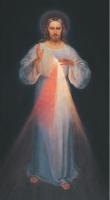Rafael Sanzio: biography, contributions and works of the genius of the Renaissance
Rafael Sanzio is a High Renaissance painter, architect and poet who, from a very young age, won the recognition of Italian society thanks to the overwhelming talent that characterized him. His early death reinforced the myth around his figure, but by then his artistic legacy had left school. What do we know about the life of the painter? What did Rafael Sanzio do? What were his contributions? What were his most important works?
Biography of Rafael Sanzio
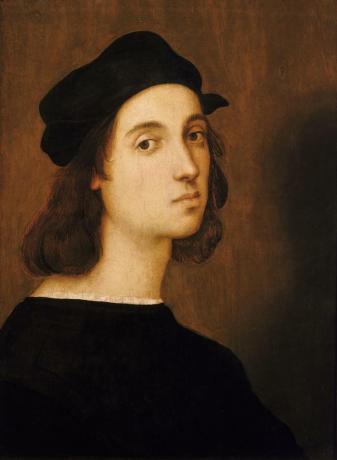
Rafael Sanzio was born in 1483 in Urbino, probably on March 28. His father was the poet and also a painter, Giovanni Santi, who worked in the service of the Montefeltro family, and who probably gave him his first lights in the field of painting. His mother was Maggia de Battista di Nicola Ciarla, who died in 1491, when Raphael was just a child.
When he was widowed, Giovanni Santi married a woman named Bernardina, from whose union Elisabetha, the painter's half-sister, was born. But Giovanni Santi would also die very soon, when the young man was 11 years old.
Thanks to the good social relations of his father and the manifest talent of the young man, Rafael did not delay in finding the support he needed. At the age of 14 he had already made himself worthy of collaborating in the workshop of Pietro di Cristoforo Vanucci, called Perugino, who trained him as a painter until he became his main assistant.
Towards the rise of his fame
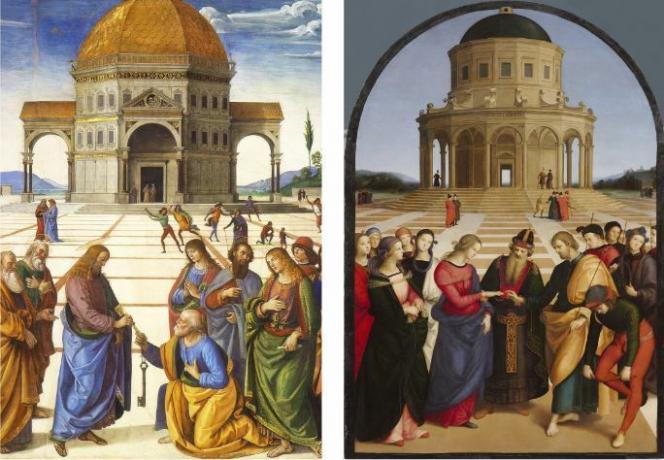
Right: Rafael Sanzio: The betrothal of the Virgin, oil on panel, 170 x 117 cm, Pinacoteca di Brera, Milan.
Around 1499, when he was only 16 years old, Rafael began to receive the first independent commissions from him in cities such as Urbino, Perugia, Città di Castello and Siena. At the beginning of this artistic independence, Raphael's works used to be small-format paintings for private devotion, such as madonnas, for example. With his fame, his name was derived from Santi, like his father, to Sanzio, a simple phonetic corruption.
One of his first commissions would be the altarpiece for the San Agustín de Città church. The painter quickly gained the respect of patrons and fellow artists. In the city of Siena, in fact, he collaborated for the artist Pinturicchio, who in 1503 required his help to decorate the Piccolomino library in the Cathedral of Siena.
The work that would catapult him to fame was The betrothal of the Virgin, made in 1504, where Rafael clarifies the influence of his teacher Perugino. However, at the end of that same year, in 1504, Rafael traveled to a city that would mark a before and after in his painting: Florence.
Florence, on the way to pictorial perfection
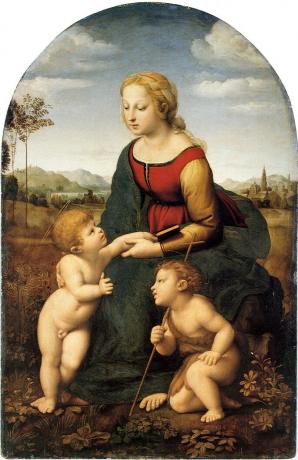
Florence was in full artistic effervescence, and had such prominent figures as Leonardo da Vinci and Michelangelo Buonarroti. The work of these masters would leave an indelible influence on Rafael, who years later would end up rivaling Buonarroti himself.
After several major works, the great moment of Raphael's artistic life would come in 1508, when Pope Julius II, a relative of the Montefeltro family, his former protectors, summoned him. Julius II wanted him to join the team of painters who worked on the decoration of the stanzas of the Vatican, in Rome.
Rome and the artistic consecration of Raphael

Commissioned by the primate of Rome, Raphael painted his most famous fresco: The school of Athens, just one of those that would decorate the rooms of the Vatican. Rafael shone in such a way that he soon displaced the other artists in the project.
On the death of Pope Julius II, he ascended to the pontificate Leo X, a relative of the Montefeltros, his former protectors. Under his patronage, Rafael concluded the Stanza di Heliodoro and the Stanza dell Fuego di Borgo. In addition to this, the pope also commissioned him to design some tapestries for the Sistine Chapel.
With what he learned in Florence and with his presence in Rome, Raphael was at the peak of his time and produced large-format works, especially altar pictures (intended for public devotion and liturgy) and portraits for the great patrons of his weather.
Around 1514, the architect of the new San Pedro in Rome, Donato d'Angelo Bramante, died, so the pontiff delegated the supervision of the project to Raphael. Overwhelmed by architectural overwork, the painter had to rely more than ever on his workshop assistants, especially Giulio Romano, to be able to finish all the orders that I had.
Legend and death
Towards the year 1520 Rafael was already a more than consecrated artist. His influence in society was of such weight that some attributed divine qualities to him, not only artistic, but sensual. Single and with a rather lax sexual morality, Rafael was known to indulge in endless nights of carnal pleasure.
His latest foray into a whorehouse ended with a feverish state that left him in bed for two weeks, until he died on Good Friday in 1520, supposedly the same day he was born. Although it is not known for sure what he died of, everything indicates that he contracted a venereal disease, probably syphilis.
By then, the master was working on his great work The transfiguration, which was left unfinished. It was finished by one of his disciples.
Characteristics and style of Rafael Sanzio
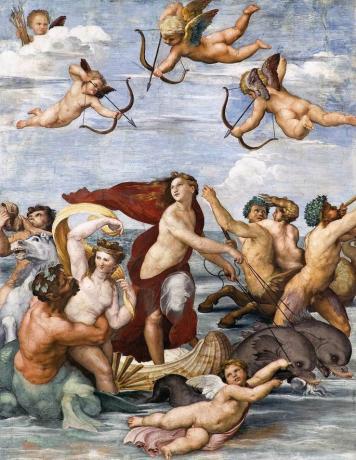
Among the most important characteristics of the painter Rafael, the following can be recognized:
- Interest in the themes of classical culture and intellectual references.
- Classic style that respects balance, proportion and symmetry.
- Balance and decorum in the composition.
- Compositional clarity.
- Spatial concern.
- Taking advantage of the linear perspective and use of architectural space.
- Diaphanous lighting.
- Vibrant coloring.
- Subtlety of the line.
- Fine finishes.
- Elegant postures in the characters.
- Compositional dynamism in his mature works.
- Introduction of psychological traits in the portrayed characters.
It may interest you Renaissance: most important features and works of art.
Influences and contributions of Rafael Sanzio
When we speak of "influences" in the plural, we refer to the influence or impact that the painter Rafael received from his teachers or colleagues who, in some way, fed his artistic line. In this section we will see what his main influences were, but also what Rafael's contributions were that impacted on subsequent generations.
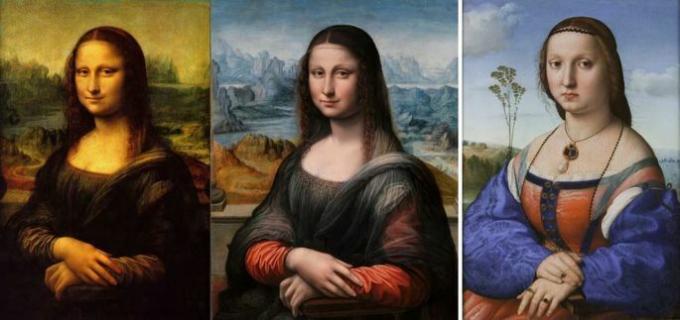
Center: Leonardo's Workshop: Mona Lisa, 1503-1519, oil on panel, 76.3 × 57 cm, Prado Museum, Madrid.
Right: Rafael: Portrait of Maddalena Doni or Maddalena strozzi, 1506, oil on panel, 65 × 45.8 cm, Pitti Palace, Florence.
Influences
Rafael Sanzio was influenced by prominent Renaissance artists. The first of them would be his teacher, Perugino, whose influence is recognizable in his work prior to the Florentine period. For scene compositions he learned the perspective system from the teacher from him. For the portraits, he modeled the almond-shaped eyes and the fleshy, tiny mouth.
Once in Florence, the artist meets the master Fray Bartolomeo. With this he perfects the coloring technique, while Fray Bartolomeo perfects his handling of the perspective of Rafael's hand.
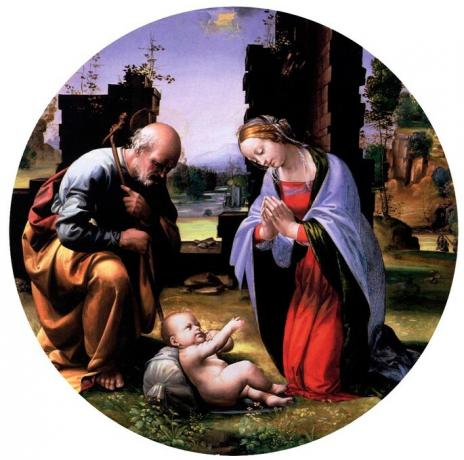
Rafael would learn from Leonardo the compositional elements in the plane. We can see the influence he exerted on his portrait work by comparing the Mona Lisa with the Portrait of Maddalena Don. Likewise, the Leonardesque influence is visible in the different madonnas that Rafael made after having known the master's work, as The beautiful gardener, of 1507.
Rafael also studied the work of the sculptor, painter and architect Miguel Ángel Buonarroti, from whom he would take advantage of the sense of dynamism of figures and monumentality. This last aspect was gradually present throughout his life and work.

Contributions and legacy
In his Roman period, Raphael began to experiment with different ways of conceiving his paintings, particularly portraits. In effect, he introduces the representation of moods and the character psychology in portraits of such significant personalities at the time as the portrait of Pope Julius II.
In addition to taking the art of portraiture to a new level, Raphael perfected the artistic canon of the Renaissance. Just as Michelangelo bequeathed the Sistine Chapel to humanity, Raphael achieved the same with the work he carried out in the stanzas from the Vatican. Such was the excellence of the frescoes that decorate those rooms, which became known as the Rafael's stays.
Just as Rafael was influenced by the great masters of his time, he left an imprint on generations to come. Indeed, his genius was of such order that with Raphael the High Renaissance was closed.

After his early death, art followed the paths of mannerism represented by geniuses like Michelangelo. However, for the detractors of this artistic trend, Rafael is the fundamental reference of Renaissance classicism.
For this reason, some generations later, the genius of the master Rafael Sanzio was copiously imitated and cited between the seventeenth and nineteenth centuries. In fact, between the late 18th and early 19th centuries, a group of German romanticism Self-styled "Nazarene Purism" or "Nazarenes", he returned to the Rafaelist aesthetic, especially in his first stage.
He may also interest you:
- When The Mona Lisa or The Mona Lisa by Leonardo da Vinci.
- 9 works that show the incomparable genius of Michelangelo.
Works by Rafael Sanzio
To illustrate the elements we have described, we present here a list of some of the most popular works. emblematic of the painter, arranged chronologically, from his early period, through the Florentine period and the Roman. This list completes the references we have already cited, such as The School of Athens, The beautiful gardener, The Triumph of Galatea, the Portrait of Maddalena Doni or Maddalena Strozzi and the Self portrait of the painter.
The betrothal of the Virgin, 1504
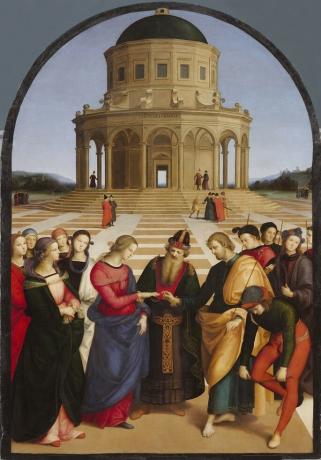
Thanks, 1505
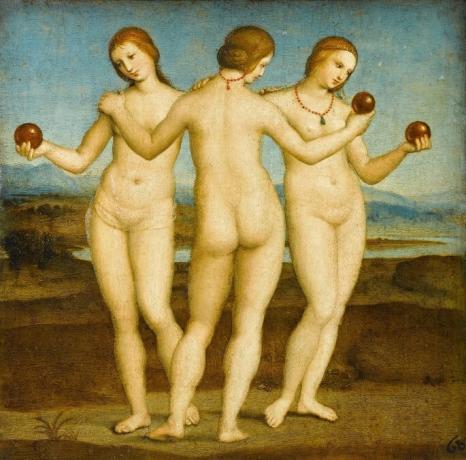
The sacrament dispute, 1509-1510
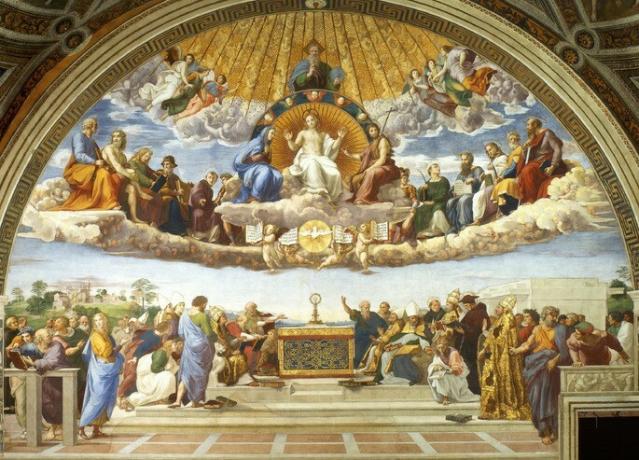
Portrait of Julius II, 1511-1512
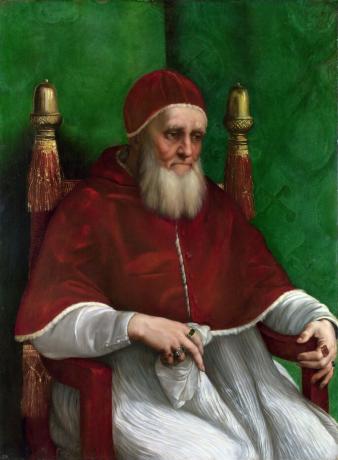
La Fornarina, 1518-1519
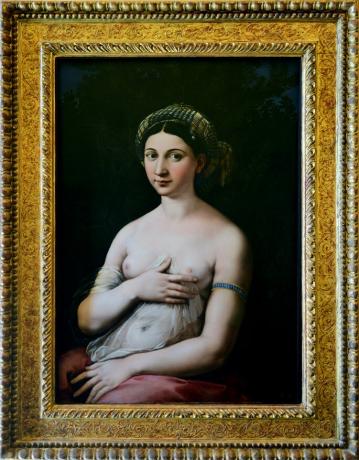
The Transfiguration, 1517-1520
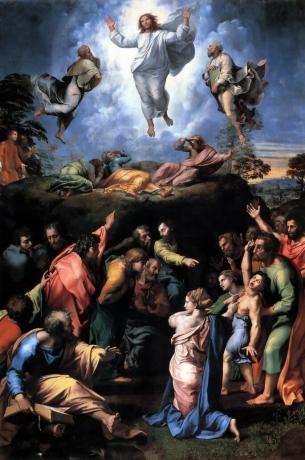
It may interest you The 25 most representative paintings of the Renaissance


